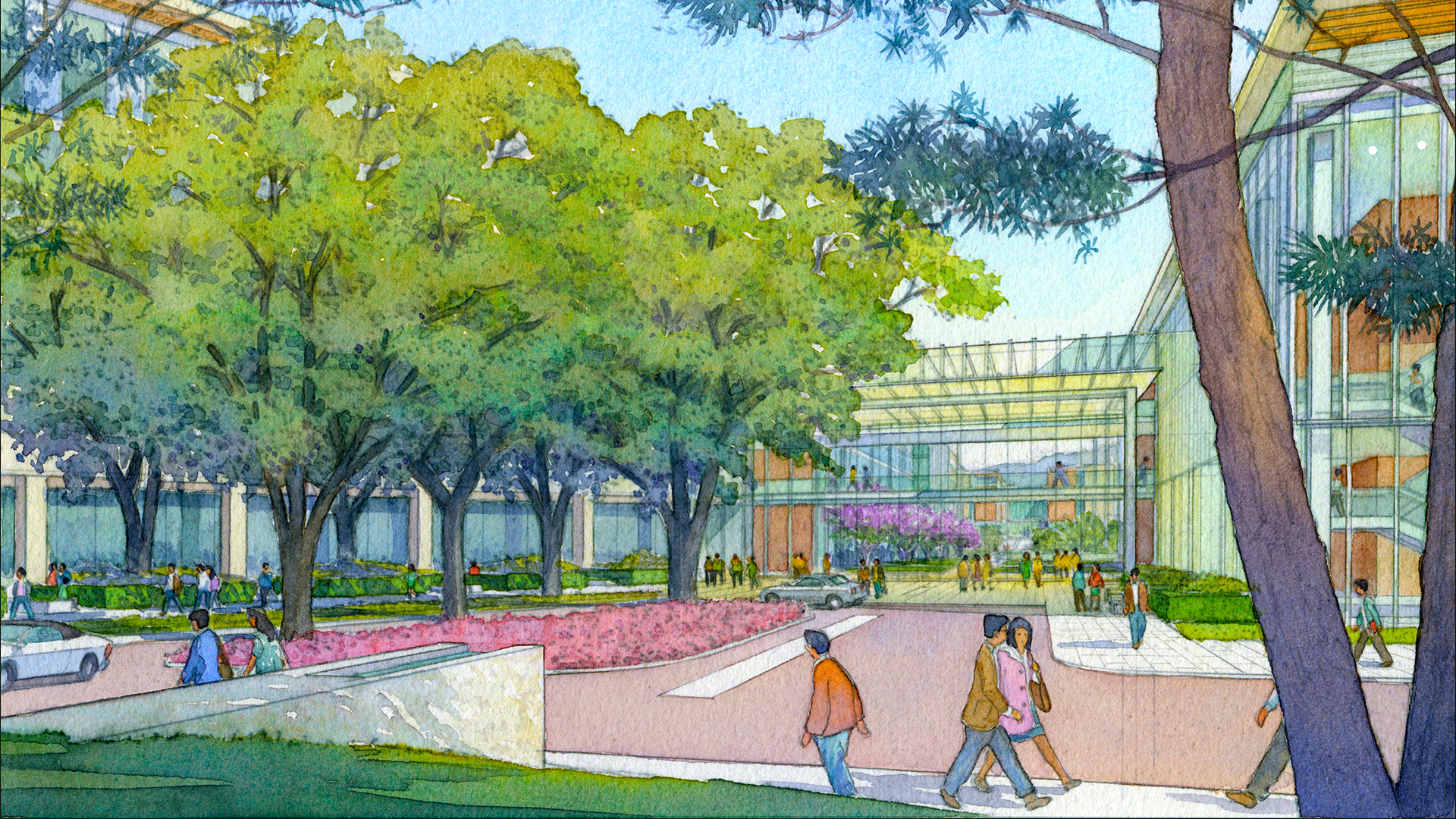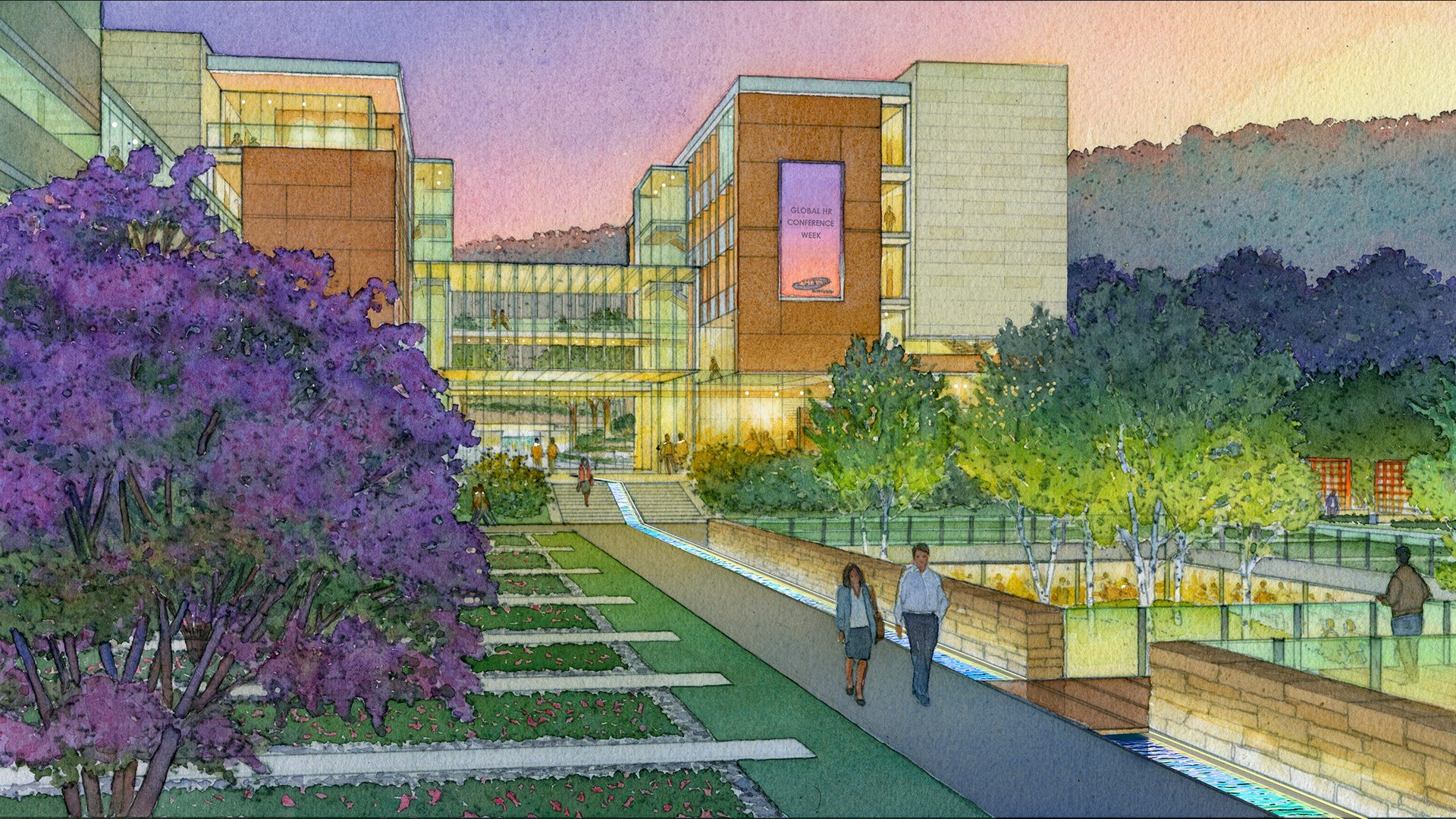DETAILS
Evolving trends in technology and the need to build a new, state-of-the-art Electronics Training Center allowed Samsung to commission the collaborative team of Samoo Architects and Thomas Balsley Associates for the design of their new facility in Keyonggi-Do Province in Korea. Essential to both Samsung and the design team was a site design solution that would be seamlessly integrated into its natural rural environment as well as foster effective sustainable strategies.
Nestled at the base of wooded hills in a natural ravine, the promontories of the training center’s site feel the warm embrace of its natural environment. The landscape concept invites the natural vegetation into the center’s perimeter edges to help blur the lines of the manmade and natural landscape. That same landscape of ravine and promontory has inspired the reinterpreted versions that are employed throughout the campus.
Metaphorical forest “fragments” strike a dialogue with the “built” landscape within. This act of replication is revealed in combination with the mounded forms and small hills that take the cue from the adjoining topography. More formalized plantings complement the landscape courtyard’s hardscape whose skeletal system expresses architectural modulations and sensibilities into a refined landscape language. As social spaces, the courtyard is dressed in more formal and sophisticated planting arrays that bring visual interest throughout the seasons.
As a central theme, the concept of water traverses the site from east to west as an organizing site element. Taking different forms with different purposes, water is embedded into the campus landscape concepts. The most meaningful and powerful expression is that of the “mountain stream” or rill. As one might expect of a ravine, the stream is the connective link between the hills and their valleys and the behind world. The strength of its straight-line geometry and the accompanying light effects will become one of the most provocative and memorable aspects of a visit or stay on campus. At each subtle change in outdoor elevation, the water’s effects are diversified, sometimes for visual and sometimes for audio effects.
Leeum Samsung Museum of Art
From its mountainside perch overlooking Seoul, the Samsung Museum of Art Complex boasts museums by three of the world’s most sought-after architects: Rem Koolhaas, Jean Nouvel and Mario Botta. Uniting these remarkable yet divergent works of architecture is a space of clean and powerful gestures. This elegant, understated landscape serves as their matrix and mu...
Tampa Museum of Art
The new Tampa Museum of Art by Stanley Saitowitz is set within the city’s arts district whose master plan was prepared by Thomas Balsley Associates and also includes Performing Arts Center, Children’s Museum, Riverwalk, and the centerpiece Curtis Hixon Park. The museum is dramatically sited on a plinth overlooking its companion park and the Hillsborough River....
Columbia University Landscape Master Plan
As part of a larger development framework plan by Beyer Blinder Belle Architects, Thomas Balsley Associates was commissioned to prepare a landscape master plan for this important historical campus.
The work began with extensive historical research into the original McKim Mead & White plan and Olmsted writings as well as an assessment of current camp...
Tokyo University of Foreign Studies Campus
Tokyo University of Foreign Studies Campus Fuchu, Japan. Landscape International, Ltd. Kume Sekkei, Architects. NBBJ Architecture. SWA provided master planning and landscape architecture for the Foreign Studies Campus of Tokyo University on the site of a former military base on the outskirts of Tokyo. This campus serves Japanese and foreign students pursuing a...






